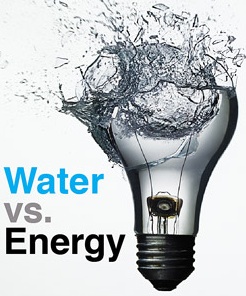Groundwater
Seasonal changes in groundwater hydrochemistry of Kakinada town - A research report by National Institute of Hydrology
Posted on 30 Jun, 2010 07:31 PMThe report deals with the results of a study on seasonal changes in groundwater hydrochemistry of Kakinada town of Andhra Pradesh. A total of 29 dug wells and 16 filter points were selected for assessing the hydrochemistry. The monthly groundwater levels measured form the wells indicated that they are different for wells located above and below the Mean Sea Level (MSL).
Groundwater quality monitoring and evaluation in and around Greater Guwahati – A research report by National Institute of Hydrology
Posted on 30 Jun, 2010 07:25 PMThe study deals with the detection of trace elements – Cu, Co, Cd, Zn, Fe, Mn, Ni and Pb along with pH and ORP in the groundwater of Guwahati and its adjacent areas. Toxicity of a metal depends on its concentration, which adversely affects any biological activity. Almost all the metals are toxic at higher concentrations, few in low concentrations and few others even in trace like As, Pb, Hg, Cd etc. The presence of such metals in groundwater is a subject of concern. Groundwater that contains higher amount of metals affects public health to a great extent when it is used for drinking and domestic purposes.
Groundwater monitoring and evaluation in Jammu and Kathua districts - A research report by National Institute of Hydrology
Posted on 30 Jun, 2010 07:20 PMThe study looks at chemical characteristics of groundwater in Jammu and Kathua on the basis of thirty water samples collected from open wells during July and December, 1997. The water quality has been evaluated for irrigation and drinking purposes. The suitability of water for drinking purposes has been compared with the standard norms i.e., BIS, 1983 and WHO, 1984.
RRA network's looking for Project Officer (Research)
Posted on 30 Jun, 2010 11:28 AMWASSAN (Watershed Support Services and Activities Network)
Location: Hyderabad, Andhra Pradesh
Last Date: 15th July 2010
Water vs energy - IEEE Spectrum magazine special report
Posted on 30 Jun, 2010 02:54 AM The IEEE Spectrum magazine, the flagship publication of the IEEE, the world's largest professional technology association, recently brought out a special report on Water vs Energy. The report contains three main sections - Thirsty Machines (Water, Energy and Industry), Uneasy Harvest (Water, Energy and Agriculture) and Tiny Test Beds (potential solutions).
The IEEE Spectrum magazine, the flagship publication of the IEEE, the world's largest professional technology association, recently brought out a special report on Water vs Energy. The report contains three main sections - Thirsty Machines (Water, Energy and Industry), Uneasy Harvest (Water, Energy and Agriculture) and Tiny Test Beds (potential solutions).
The Uneasy Harvest section contains a special report - "Pumping Punjab Dry", on the depleting groundwater situation in Punjab, and how cheap energy is endangering India's food security.
"Where Water meets Watts", is a map of Water and Energy hot spots and bright spots.
Review of methods analyzing pump test data - A research report by National Institute of Hydrology
Posted on 29 Jun, 2010 10:34 PMThe methods of pump test analysis reviewed in this report has been classified as traditional, computer based and new graphical. Quantitative data on hydraulic characteristics of aquifers including transmissivity and storativity are essential to the understanding and solution of aquifer problems and the proper evaluation and utilization of groundwater resources.
Soil moisture movement and recharge to groundwater using Tritium tagging techniques in Hardwar - A research report by National Institute of Hydrology
Posted on 29 Jun, 2010 08:27 PMThe study looks at soil moisture movement and recharge to groundwater using nuclear methods like tritium tagging. It estimates the recharge to groundwater due to monsoon rain and irrigation through the unsaturated porous media in case of cultivated and uncultivated fields.
Hydrological investigations and instrumentation in a small watershed in Garhwal Himalayas - A research report by the National Institute of Hydrology
Posted on 29 Jun, 2010 07:47 PMThe report presents the preliminary results of a hydrological study in Danda watershed, a small hilly watershed located in Tehri-Garhwal, representative of the mountainous sub-humid agro-ecological region in the western Himalayas.
Groundwater quality monitoring and evaluation in and around Greater Guwahati - A research report by National Institute of Hydrology
Posted on 29 Jun, 2010 11:05 AMIn this study, groundwater quality monitoring and evaluation of Greater Guwahati is presented based on the physico-chemical characteristics of thirty samples collected on grid pattern. The various parameters analyzed include pH, electrical conductivity, temperature, Dissolved Oxygen (DO), Total Dissolved Solids (TDS), alkalinity, hardness, Na+, K+, CA++, Mg++, NO3-, SO4--, Cl- and F-. The results were compared with water quality standards prescribed by BIS and WHO.
Application of a modified SCS-CN model - A research report by National Institute of Hydrology
Posted on 29 Jun, 2010 10:20 AMIn this study, the modified version of the Soil Conservation Services-Curve Number (SCS-CN) by Mishra and Singh (1998a) was employed to the data of 14 watersheds falling in the arid (Rajasthan) and 2 watersheds in the sub-humid (Madhya Pradesh and Uttar Pradesh) regions of India and the results were compared with those of the existing SCS-CN method. The modified version is found to perform better than the existing SCS-CN method in all applications to the data of 16 watersheds.




